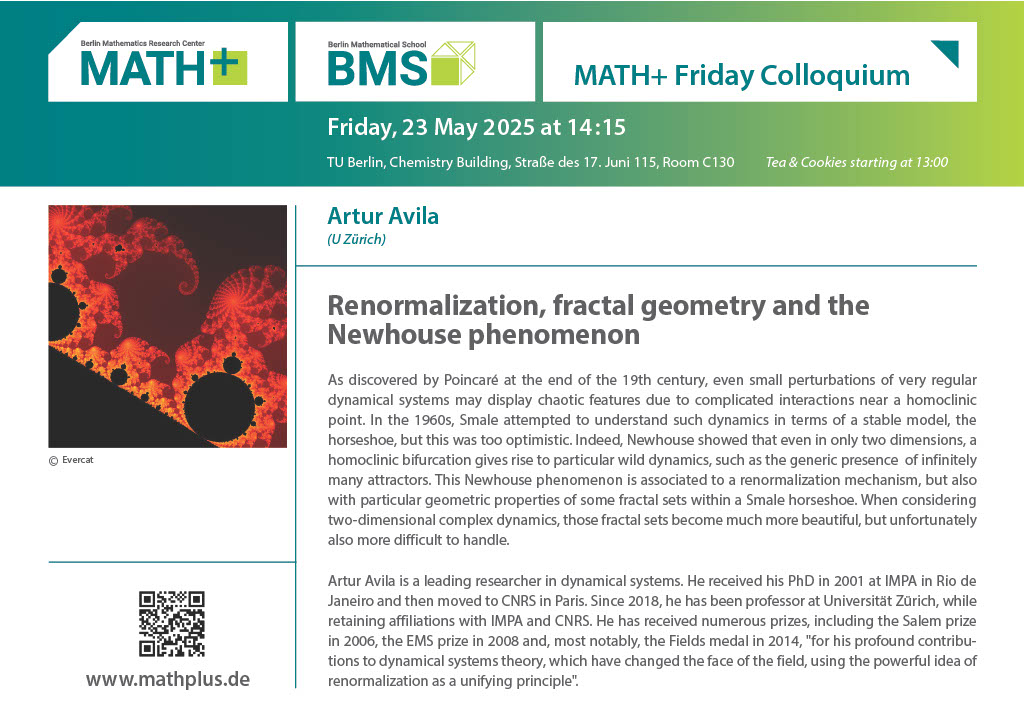23 May – Artur Avila: Renormalization, fractal geometry and the Newhouse phenomenon
As discovered by Poincaré at the end of the 19th century, even small perturbations of very regular dynamical systems may display chaotic features due to complicated interactions near a homoclinic point. In the 1960s, Smale attempted to understand such dynamics in terms of a stable model, the horseshoe, but this was too optimistic. Indeed, Newhouse showed that even in only two dimensions, a homoclinic bifurcation gives rise to particular wild dynamics, such as the generic presence of infinitely many attractors. This Newhouse phenomenon is associated to a renormalization mechanism, but also with particular geometric properties of some fractal sets within a Smale horseshoe. When considering two-dimensional complex dynamics, those fractal sets become much more beautiful, but unfortunately also more difficult to handle.
Artur Avila is a leading researcher in dynamical systems. He received his PhD in 2001 at IMPA in Rio de Janeiro and then moved to CNRS in Paris. Since 2018, he has been professor at Universität Zürich, while retaining affiliations with IMPA and CNRS. He has received numerous prizes, including the Salem prize in 2006, the EMS prize in 2008 and, most notably, the Fields medal in 2014, “for his profound contribu-tions to dynamical systems theory, which have changed the face of the field, using the powerful idea of renormalization as a unifying principle”.


